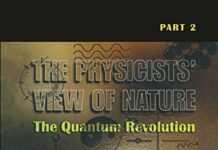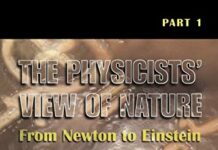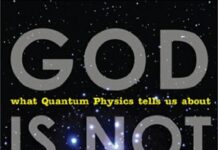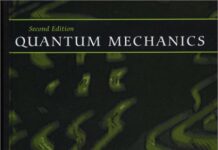
Ebook Info
- Published: 1995
- Number of pages: 336 pages
- Format: PDF
- File Size: 3.81 MB
- Authors: Amit Goswami
Description
In this stimulating and timely book, Amit Goswami, PhD, shatters the widely popular belief held by Western science that matter is the primary “stuff” of creation and proposes instead that consciousness is the true foundation of all we know and perceive. His explanation of quantum physics for lay readers, called “a model of clarity” by Kirkus Reviews, sets the stage for a voyage of discovery through the common ground of science and religion, the entwined nature of mind and body, and our interconnectedness with all of creation.
User’s Reviews
Editorial Reviews: About the Author Amit Goswami, PhD, is a theoretical quantum physicist and a retired professor from the University of Oregon’s Department of Physics, where he served from 1968 to 1997. He is a pioneer of the new paradigm of science called “science within consciousness,” an idea he explicates in his seminal book, The Self-Aware Universe, in which he also solves the quantum measurement problem elucidating the famous observer effect. Dr. Goswami has written several popular books based on his research on quantum physics and consciousness, including Physics of the Soul and Quantum Economics: Unleashing the Power of an Economics of Consciousness.
Reviews from Amazon users which were colected at the time this book was published on the website:
⭐This book is a conscious effort by the author to provide a link between the physical reality and consciousness. The first half of the book presents conceptual part of quantum physics in which he discusses the uniqueness of quantum world and how it differs from classical reality. The introduction to quantum physics is very well presented. The second half of the book discusses as how consciousness figures in the depiction of reality, and in the process, he proposes a new and alternative interpretation of idealistic monism to explain quantum phenomenon. He is best known for his role as a commentator in the 2004 movie “What the bleep do we know?” starring Marlee Matlin (1).It is well known that quantum reality does not reconcile with classical reality. Classical reality assumes matter (electrons, atoms, molecules, living species, planets, stars, and galaxies) are real and exist independent of observers or the method we employ to observe them; thus, classical physics is dominated by this objectivity. Secondly determinism; the idea that it is possible to predict completely the motion of all material objects if initial conditions such as position and velocity are known. Thirdly, the cause leading to the effect in the cause-effect relationship of classical reality is due to certainty that an action lead to certain effect. In quantum physics the behavior of quantum objects is probabilis¬tic and strict cause-effect description of the behavior of a single object is impossible. Fourthly, the principle of locality is that all material influences occurring in spacetime must be local, and the information can travel in space at a finite velocity, and not faster than the speed of light. The assumption of locality that all inter¬actions between material-objects are mediated via local signals is crucial to the materialistic view that objects exist independently and separately. Fifthly, materialism depicts that matter and energy are fundamental and all other phenomenon are secondary. The epiphenomenalism is a principle in which all mental phenomenons are explained as secondary to matter by suitable reduction to antecedent physical conditions. Thus consciousness is assumed by the objectivity of science to be a secondary, a part of living being, perhaps an advanced living species. The subject and objects in classical thought are two different things, and God and consciousness do not appear in any mathematical formula, but consciousness appears in physical interpretation of reality. In quantum physics the collapse of wave function upon observation by a conscious observer mixes subject and object, and there is no distinction between the two. Consciousness is without experiences and it is devoid of an object or a subjectThe strangeness of quantum world may be summarized as follows; a quantum object can be at more than one place at the same time because of its wave property, and it cannot manifest in classical spacetime reality until we observe it as a matter (wave function collapse). A quantum object possesses both wave and particle (matter) nature but they are complementary properties. Quantum uncertainty prevents the momentum and the position to be determined precisely because of Heisenberg uncertainty principle. This is not measurement problem but a quantum physical problem since it is mathematically proved that the product of the position and the momentum is equal to or greater than Planck’s constant. A quantum object ceases to exist here and simultaneously appears over there by quantum jumps and we cannot say it went through intervening space. A manifestation of one quantum object caused by our observation simultaneously influences its correlated twin object, no matter how far apart they are in the universe, by quantum entanglement. The behavior of quantum objects is probabilis¬tic and strict cause-effect description of the behavior of a single object is impossible. Instead, we have statistical cause and statistical effect when talking about a large group of particles. To understand quantum reality in the classical world physicists use a schema of interpretation; this depends on the philosophy or school of thought. Copenhagen interpretation postulated largely by Niels Bohr, Werner Heisenberg and Max Born is commonly used.The author claims that there is a monistic alternative to material realism where mind and matter are integral part of one reality, but reality is not based on matter alone. He observes that the existence of objective reality independent of consciousness is absurd and believes that the universe is “self-aware” and that it is consciousness itself that creates the physical world. It is outside of spacetime, non-local, all pervading and All-in-One unitary being. It is the consciousness that is the ultimate reality; the immanent and transcendent are within consciousness He attempts to convince the reader that monistic idealism provides a paradox-free interpretation of quantum physics that is logical, coherent, and offers explanation for mental phenomenon such as; self-consciousness, free-will, creativity and extrasensory perception, and finally provide a role for spiritual side of existence. In his discussion about artificial intelligence he questions how mind can be treated like a machine and free will as an illusion. Roger Penrose argues that computer like algorithmic reasoning is insufficient for the discovery of physical and mathematical (theorems) laws. Then where does mathematics come from if we operate like a computer? Mathematical truth is not ascertained by mere use of an algorithm (a systematic procedure which is strictly a logic based approach) for solving a problem. Consciousness is required to comprehend the mathematical argument to be convinced of its validity, and elucidate the emerging physical concepts. Therefore consciousness must exist prior to algorithm and mathematics.To explain the role of consciousness quantum physics, he cites von Neumann’s work; the state of a quantum system (here it is mind) undergoes change in two separate ways. The first is a continuous change in which it spreads as a wave, becoming a coherent superposition of all the potential states allowed by the situation. Each potential state has a certain statistical weight given by its probability wave ampli¬tude. A measurement introduces a second discontinuous change in the state, and the state of superposition that exists in multifaceted potentia is reduced to one actualized facet. Some physicists view the selection process is random, but according to the idealist interpretation, it is consciousness that chooses the outcome. The intervention of the nonlocal consciousness collapses the probability cloud of a quantum state. Since this outcome is a conscious experience, we choose our conscious experiences yet remain unconscious of the underlying process. It is this unconsciousness that leads to the illusory separateness, the identity with the separate “I” of self¬-reference (rather than the “we” of one consciousness). The book provides significant number of references to other works such as; Vedanta (Hindu philosophy), Buddhist and Western philosophical thoughts and how they are related to his monistic interpretation. This book is highly recommended.1.
⭐2.
⭐3.
⭐4.
⭐5.
⭐This book gives an excellent review of the difficult and elusive subject of Consciousness, from philosophical, psychological, neuroscience and quantum mechanical viewpoints, quoting many researchers in these fields, backed by extensive references to hundreds of papers and books, and advances an audacious proposition that the Hindu Vedantic concept that Consciousness creates the world can be substantiated by quantum mechanics. In particular, the quantum mechanical wave function and its collapse by measurement, and the intriguing phenomena of entanglement, action at a distance and non-locality are attempted to apply to how Consciousness may influence the world in a manner akin to quantum mechanical wave function.But the author takes too much liberty in such applications of quantum mechanical phenomenology, his speculations appearing like scientific conclusions. It would have been much better if the author, a professor of quantum mechanics himself, made it clear that these are speculations, not facts. Many great scientists have speculated on subjective spirituality, but kept their scientific studies entirely objective. For example, Isaac Newton subjectively speculated when the Biblical Last Day (Day of Judgement) will happen – that date passed by recently without the world ending – but his Laws of Motion and Law of Gravitation were entirely objective, and in fact contradicted Church’s geocentric universe. Albert Einstein, critical of the fundamentally statistical nature of quantum mechanics, believed that God does not play dice, but he was one of the founding fathers of quantum mechanics itself, and accepted all objective evidence. Oppenheimer and Schrodinger were impressed by Vedanta, but did not base their scientific work on it. To make the distinction between subjectivity and objectivity, in the famous Schrodinger’s Cat thought experiment, the objective version would be when the act of observation involved the physical opening of the box, nothing to do with the consciousness of the person who opens the box. On the other hand, the subjective version would be when the observer does not open the box but uses his consciousness to decide a particular outcome, and some one else opens the box to see what the outcome is – there will be no systematic correlation between the outcome decided by consciousness and the physical outcome. In the famous Einstein – Bohr debates on wave-particle duality, neither of them made any reference to consciousness of the experimenter, but only the experiment: If the experiment was to observe wave nature the particle behaves as a wave, and if the experiment was to observe particle nature then particle behaves as a particle. This Complementarity Principle advanced by Bohr, and verified to be true by numerous ingenious experiments, has given rise to speculations (not facts) that the consciousness of the person who devised the experiment may also be taken into account. If consciousness is included the experiment will be subjective – no one has successfully conducted such experiments. If consciousness is not included in the experiment (as was in Einstein – Bohr debates and in all the experiments to date), the experiment is objective.Much has been discussed about wave function collapse. But once we recognize that the wave function, a probability amplitude function, is a purely mathematical non-physical construct, we see that the purely mathematical entity can collapse without violating any physical laws. On probability, it is wrong to characterize classical physics as deterministic in contrast to probabilistic quantum mechanics. Statistical mechanics, a branch of classical mechanics, is statistical, fully developed long before quantum mechanics and successfully applied to important subjects like thermodynamics. The distinction between classical mechanics and quantum mechanics is far more subtle, will take up too much space here to elaborate. Non-locality is when the effect and cause are separated by distance that exceeds the limit set by speed of light in space (186,000 miles per second). But in experiments like telepathy, the separation distance is much less than what light would travel in the time resolution of cause and effect, probably several milliseconds at best, during which light would travel hundreds of miles. If one delves into details of Aspect’s impressive experiments on entanglement, one will find subtleties that are glossed over, such as the role of correlation.While non-scientists like to run off with speculations on quantum mechanics, it would be better if scientists took care to emphasize the speculative nature of their concepts, so that non-scientists will not run away with it.All said and done, author Prof. Amit Goswami needs to be congratulated on an excellent work on a very difficult subject of Consciousness and the Material World, bringing Vedanta a bit closer to the reader.
⭐Not finished it yet but I’m enjoying it greatly. The physics stuff is more than interesting anyway before it delves more into the metaphysical aspects.I like the writing style, presented in an easy to understand approach but without dumbing down. It resonates strongly with me, echoing my own beliefs that life & consciousness exist within all of creation, within all matter; the universe itself is alive. We are not a disease of matter as arch atheists like Hawking, Dawkins & co are so cocksure of.Its another excellent work and another valuable resource in my investigations into the afterlife, the nature of consciousness etc.Just not a book for those of a closed mind.I will make a point; I thought the author, as being of a similar cultural background, might be similar in style to Deepak Chopra. I have read one of Deepak’s books but must say I prefer this – its less heavy on eastern mysticism and where it uses, it makes a better use of it too.
⭐The Self-Aware Universe: How consciousness creates the material world, by Amit Goswami, Jeremy Tarcher, New York, 1993, 336 ff.The author sets out at the beginning how he views the world. He is rejecting the dualism of Descartes that suggested the world about us comprised material things and thinking things, that is, matter and minds. Goswami’s world is a holistic unity – a world the philosophers would describe as monistic. Thus, he also rejects the dualism of western religion separating God from Man and Nature.Then Goswami addresses the scientists. Theirs is a world of materialism. Only material objects and their properties are relevant. Any spirituality is subjective and meaningless to everyone else. But the deepest experiences of humankind are those of the soul and emotions and here science, that has explained so much, has little or nothing to say by way of explanation or interpretation. And the world of the numinous is the philosophical world of idealism.The author is professor of physics at the Institute of Theoretical Sciences at the University of Oregon and is well-known for his writings that try to bridge the gap between materialist science on the one hand and the world of spirituality on the other, like Fritjof Capra a couple of decades earlier. He makes an important distinction though between mind and consciousness. Essentially, mind is the collection of our thoughts; consciousness is awareness and includes our sensory experiences. That aspect of our minds that Jung described as the collective unconscious is what Hindus describe as Atman. The mystic sees this unitive consciousness as God.Goswami explains the mind-twisting concepts of quantum physics – non-locality, wave-particle duality, complementarity – quite simply for the non-specialist. The quantum matter/energy concept is the scientists’ vision of transcendence – `being beyond comprehension’. He also makes quite frequent reference to parallels between his scientific philosophy of monistic idealism and Hindu mythology. It might have widened the readership if Goswami had tied the quantum world view into eastern mysticism more generally, like Capra, but Goswami makes an excellent job of his presentation.I didn’t find the sharp three-fold division of the book into physics, philosophy and mysticism that some other reviewers have found. The book is indeed presented in four parts, but they are much more integrated than that. Because of this diversity of content, the book does seem to jump around a bit in order to make these connections, and this does demand greater concentration from the reader.When you read this book, the author’s writing style is such that you feel you are in conversation with him. Although it deals with many challenging ideas, it is presented in as non-academic a style as possible for such sophisticated subject matter. If you are interested in a spiritual approach to the material world but one that is compatible with the latest ideas in quantum physics, then this book is for you. You must however be prepared to embrace some of the mystical ideas of eastern religion. There’s a glossary of technical terms, a list of references and a bibliography, and a good index.Dr Howard A. Jones is the author of The Thoughtful Guide to God (2006) and The Tao of Holism (2008), both published by O Books of Winchester, UK.
⭐Creative Evolution
⭐
⭐Mind Before Matter: Visions of a New Science of Consciousness
⭐If you’re not a physicist or are not interested in quantum physics, then this will be a little hard going for you. Goswami goes to great lengths to expalin the applicability of quantum mechanics to what he calls “monist idealism”. Current, and indeed recent, advances in quantum theory fit neatly into his hypothesis of us all, humans, animals, things, sharing one consciouness. Better than the religious theories, Goswami still manages to make quantum mechanics sound pretty spiritual anyway, whjich is no bad thing, after all, we are all in need of a little imagination and creativity from time to time.It’s a complex read, but worth getting your head around to understand the latest, cutting edge, fringe even, science of quantum consciouness.
⭐Great topic and I’m sure the author has done a wonderful job of representing it. Only problem was that I have minimal science background so found it too hard to follow the logic- should have checked the sample pages more closely I guess. Cost me £3.99 to return it 🙁
⭐A bit difficult to understand , but thats because the subject matter is convoluted . Amit is very good in breaking it down into layman’s terms. the concept is brilliant but I think the scientific world will have a problem dealing with it
Keywords
Free Download The Self-Aware Universe: How Consciousness Creates the Material World in PDF format
The Self-Aware Universe: How Consciousness Creates the Material World PDF Free Download
Download The Self-Aware Universe: How Consciousness Creates the Material World 1995 PDF Free
The Self-Aware Universe: How Consciousness Creates the Material World 1995 PDF Free Download
Download The Self-Aware Universe: How Consciousness Creates the Material World PDF
Free Download Ebook The Self-Aware Universe: How Consciousness Creates the Material World



